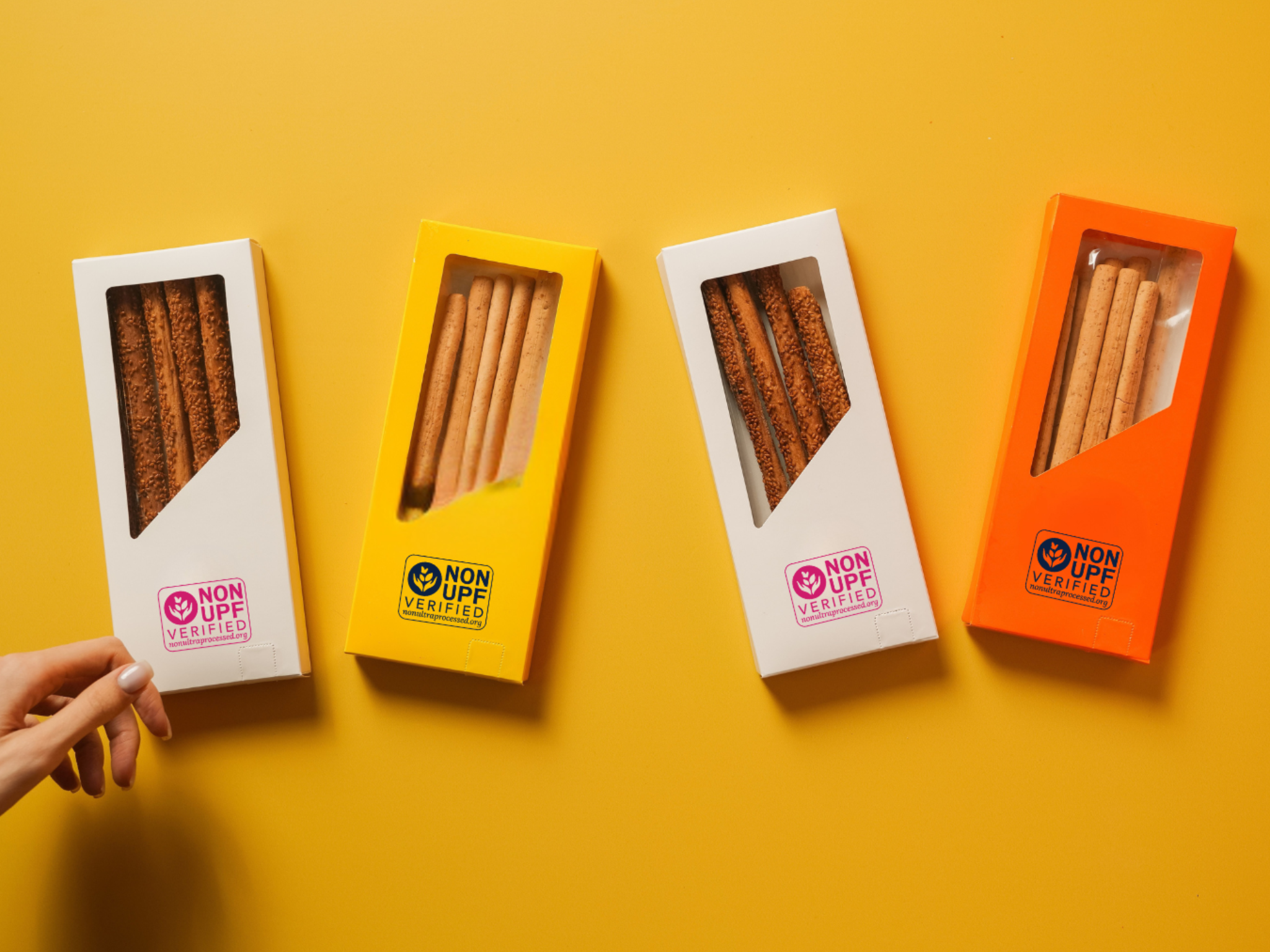
The Non-GMO Project recently launched a new on-pack certification to help consumers identify ultra-processed foods – here’s what you need to know, and what it means for plant-based meat.
With ultra-processed foods (UPFs) front of mind for consumers in 2025, one of the US’s most well-known food verification bodies recently rolled out a new label to promote transparency around these products.
The Non-GMO Project, the organisation behind the Non-GMO label, has introduced a Non-UPF Verified label to “address the pervasive dominance of ultra-processed food”. The badge was launched under the Food Integrity Collective, a group that convenes stakeholders from the natural products sector to “create systemic change in our food system”.
“We’re really focused on the power of informed choice to create a food system with more integrity,” Megan Westgate, founder and CEO of the Non-GMO Project, told Green Queen in January.
“And right now, UPF is not sufficiently defined and is generally harder than it should be to identify, so that’s the gap we’re aiming to fill with this new standard and programme.”
What is the Non-UPF Verified Label?
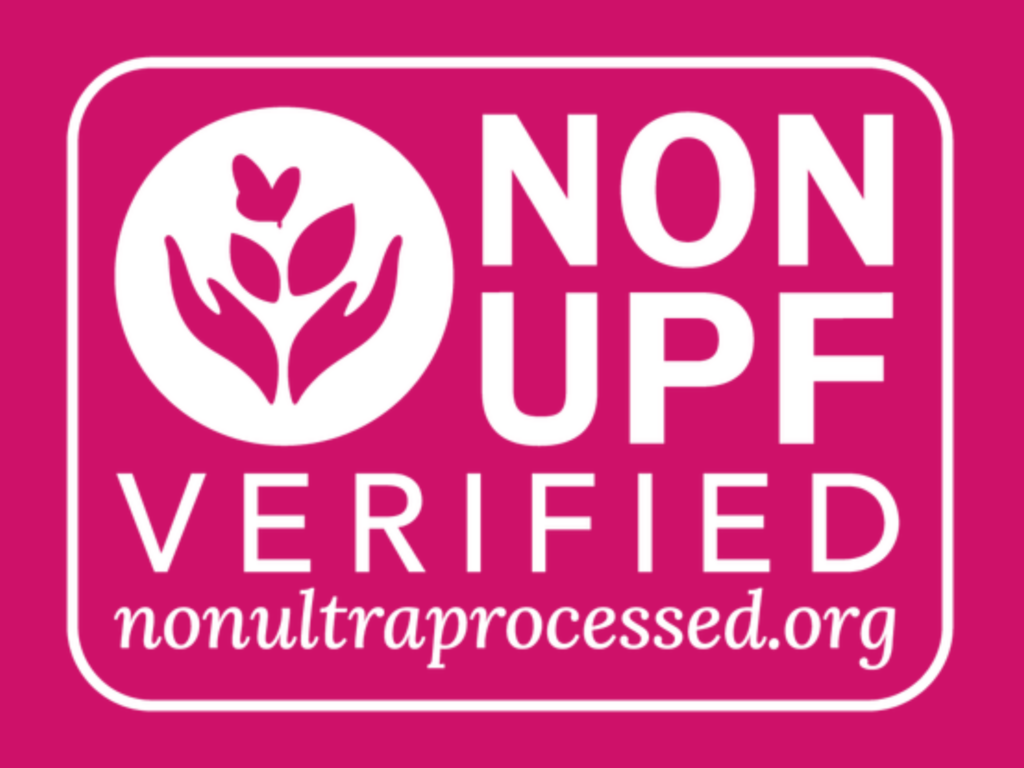
A survey conducted by the Non-GMO Project last year found that 85% of Americans wanted to avoid UPFs, but felt overwhelmed or unsupported in their desire to do so.
The Non-UPF standard aims to “provide a clear and enforceable framework for identifying foods that avoid excessive industrial processing and certain manufactured additives”, the organisation said in a webinar last week. It would prohibit ingredients “under investigation for metabolic dysfunction, gut microbiome disruption, and other health concerns”.
The group explained that the label is designed to set measurable criteria for defining non-UPFs, based on processing methods, “ingredient integrity”, and formulation thresholds. It also aims to offer manufacturers, retailers and consumers a “practical, science-based tool” to navigate today’s complex food landscape, and support innovative producers that prioritise whole, minimally processed ingredients that are feasible for real-world application.
There is currently a waitlist for companies looking to use the Non-UPF Verified label on their product packaging, with its creators currently working on establishing a clear framework of standards manufacturers would need to meet to qualify for the label.
The organisation is conducting a pilot this spring and summer with a select group of brands, working on an initial draft of the label to be used with four technical administrators through the trial. “They’ll be working with up to 20 different brands and a variety of products in those brands’ portfolios to pressure-test the standard and give us input,” Westgate said, adding that her team will engage with the public for input over this period too (though a formal consultation won’t be held until later).
How was the Non-UPF label developed?
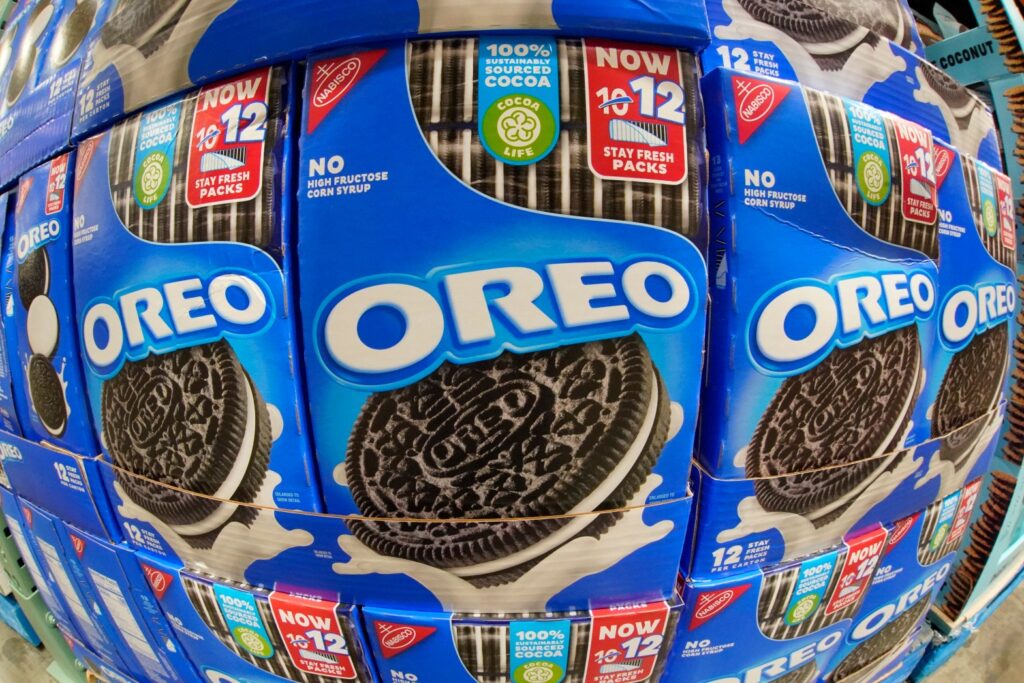
The Non-GMO Project outlined four key considerations that inform its Non-UPF verification standard. The first concerns hyperpalatability. “UPFs are often engineered to override natural satiety signals, leading to overconsumption and increased risk of obesity and metabolic disorders,” it said in the webinar.
The second factor revolves around food structure and imbalance, since UPFs are often developed in a way that disconnects texture, flavour and nutrient delivery from whole-food formats, resulting in significantly different compositions.
“Some of that comes into the way that flavourings are used, which also relates to hyperpalatability,” Westgate explained. “The food matrices are eroded, and the body is confused.”
Excessive processing is another consideration, with the organisation suggesting that heavy industrial processing alters food structure, reducing the bioavailability of nutrients. “A lot of the times, if we’re just looking at nutrient levels – like a Nutrition Facts panel – that doesn’t really tell us [if this is] actually something that the body can recognise as food?” Westgate described.
Finally, the Non-UPF Verified label was also designed with the use of isolated ingredients in mind. Additives, emulsifiers, and “ultra-refined ingredients” can modify texture, extend shelf life, and intensify flavour, but they’re “often disconnected from the structure and function of whole foods”.
What are the proposed guidelines?

So how does it plan to implement the certification? “We will have a list of prohibited ingredients. We’re looking to align with things that are banned in the EU… [and] California in recent legislation,” said Westgate.
The Non-GMO Project is similarly monitoring the lists maintained by Whole Foods Market and PCC Community Markets, detailing ingredients they don’t allow to be included in products sold in their stores. “This feels very similar to where we were at in the early days of Non-GMO,” she said. “It really wakes people up when they find out that there are things in our food that are illegal in other countries.”
It has also homed in on the concept of nutrient thresholds for formulations, citing studies that link hyperpalatability to foods with combinations of sugar, oil and salt that don’t occur in nature. “There’s pretty robust research suggesting specific thresholds for the amount of those macros in combination with each other. And so the current draft of the standard proposes taking that lens,” noted Westgate.
The organisation has proposed a classification system for processing to identify how much each method – whether it’s mechanical, chemical, biological, or thermal – breaks down the food matrix, and what its effects are.
Through the pilot, it’s looking to get insight directly from brands about the types of equipment and processes they’re using to classify what’s permissible, what can be used conditionally, and what would classify as minimally or moderately processed.
Speaking of which, it outlined a framework for “conditional ingredients”. “We are contemplating an allowance for up to 5% of the finished dry weight of the product [that] could be constituted by what we’re calling micro-ingredients,” said Westgate, referring to ultra-processed ingredients that individually make up just 0.5% of a food item, and are not on the prohibited list.
What does this all mean for plant-based meat?
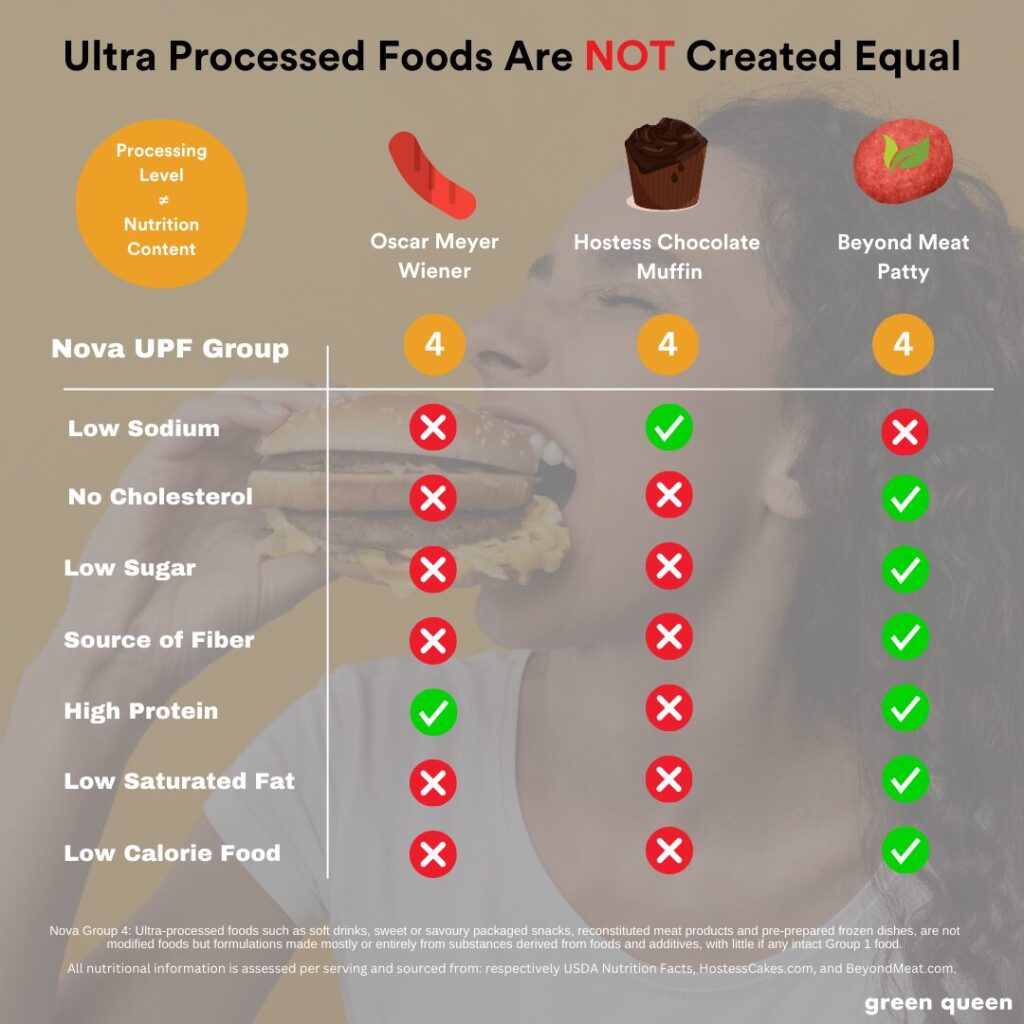
UPFs have come under heavy scrutiny from US health secretary Robert F Kennedy JR, who has previously vowed to remove them from school lunches. Plant-based meat has been caught in the crossfire, subjected to criticism amid misguided connections of processing with nutrition.
This is because these products fall under the bottom category of the Nova classification, which groups food by how much they’ve been processed. UPFs comprise industrial formulations and techniques like extrusion or pre-frying, and cosmetic additives and substances deemed to be of little culinary use.
Despite most meat alternatives being better for human health than the products they intend to replace, they’ve been bundled together with products like Coca-Cola, Oreos, Corn Flakes, and Lay’s. A host of health experts have therefore advocated for nuance when linking UPFs with nutrition, arguing that one has nothing to do with the other.
When speaking to Green Queen earlier this year, Westgate agreed that “most of the pushback about the correlation between UPFs and nutrition/metabolic health is related to how broad Nova category four is, which is part of what we’re seeking to address”.
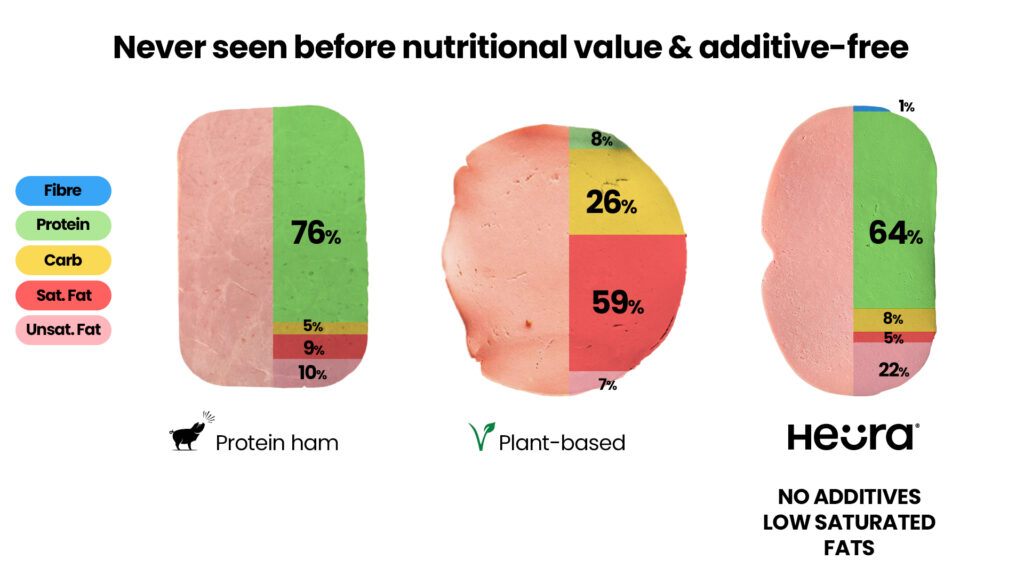
So what does the Non-UPF Verified label mean for meat alternatives? It’s a question that came up during the webinar too, pointing out how some additives actually help provide better nutrition than animal products.
Westgate acknowledged that the plant-based category is certainly attracting “a lot of interest” in this regard, adding that it’s aiming to get representation from all major retail categories in its pilot, which has seen interest from over 170 brands, including those that use vital wheat gluten.
This includes plant-based alternatives, which would help it learn about “the ways that these products can be created that are not ultra-processed”. “Right now on the market, we have a range of plant-based alternatives – like some of every category, there are definitely things that are ultra-processed and there are examples of things that are not,” explained Westgate
“For the pilot, we’re really looking at things at brands and product lines where some intent has been there to formulate to avoid ultra processing, even in advance of it being fully defined, so that we can learn from brands. What were you considering? What tradeoffs did you have to make? How did you draw the line?”
How will plant-based meat fare under the Non-UPF Verified standard? It’s a question that remains top of the list for the organisation.
The post Explainer: What is the Non-UPF Verified Label, and What Do Brands Need to Know? appeared first on Green Queen.
This post was originally published on Green Queen.